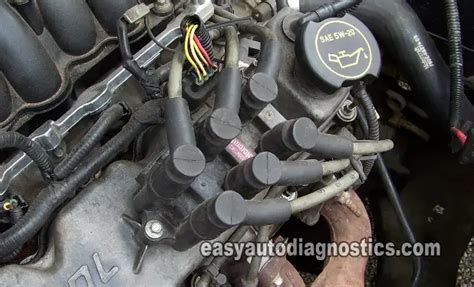How to Diagnose a Bad Ford Coil Pack: A Comprehensive Guide
Dealing with a misfiring engine can be a frustrating experience, especially when you suspect the culprit is a faulty coil pack. Ford vehicles, like many others, rely on these crucial components for ignition. This guide will walk you through the process of diagnosing a bad Ford coil pack, helping you pinpoint the problem and get back on the road.
Understanding Your Ford's Ignition System
Before diving into diagnostics, let's briefly understand the role of coil packs. A coil pack provides the high voltage needed to ignite the air-fuel mixture in your engine's cylinders. Each cylinder typically has its own coil (or a pair of coils grouped together), generating the spark required for combustion. A failing coil pack can lead to misfires, reduced engine performance, and even damage to your catalytic converter.
Common Symptoms of a Bad Ford Coil Pack
Several telltale signs indicate a potential problem with your Ford's coil pack. These symptoms often overlap with other issues, so a thorough diagnosis is crucial. Look out for:
- Engine Misfires: This is the most common symptom. You might feel a rough idle, hear a sputtering sound from the engine, or notice a decrease in power. Check your engine's diagnostic trouble codes (DTCs) – a misfire code often points towards a faulty coil pack.
- Check Engine Light: A illuminated check engine light, accompanied by a diagnostic trouble code (DTC), often signals a problem, though the code itself might not specifically point to the coil pack. It's a crucial indicator needing further investigation.
- Reduced Engine Performance: Sluggish acceleration, loss of power, and poor fuel economy can all result from a misfiring cylinder caused by a bad coil pack.
- Rough Idle: The engine might shake or vibrate excessively at idle, especially when the engine is cold.
Diagnosing a Bad Ford Coil Pack: A Step-by-Step Approach
This section provides a practical, hands-on approach to diagnosing your Ford's coil pack. Remember safety first! Always disconnect the negative battery terminal before working on any electrical components.
1. Inspect Visually
Begin by visually inspecting the coil pack(s) located on top of the engine. Look for:
- Physical Damage: Cracks, burns, or any signs of melting could indicate a faulty coil pack.
- Loose Connections: Check that the connectors are securely attached. A loose connection can mimic the symptoms of a bad coil pack.
2. Check for Diagnostic Trouble Codes (DTCs)
Use an OBD-II scanner to retrieve any stored DTCs. Misfire codes (often indicated by a "P030X" code, where "X" represents the cylinder number) are a strong indicator of a problem with the coil pack for that particular cylinder.
3. The Swap Test (Most Reliable Method)
This involves swapping suspected faulty coil packs with known good ones from another cylinder. If the misfire follows the swapped coil pack, you've identified the culprit. Note: This requires a spare coil pack (or access to a known good one).
4. Testing with a Multimeter (Advanced Technique)
Using a multimeter, you can measure the resistance of each coil within the pack. The resistance should fall within the manufacturer's specifications (found in a repair manual for your specific Ford model). This method requires technical expertise and familiarity with electrical testing.
Replacing a Ford Coil Pack
Once you've identified the faulty coil pack, replacing it is usually a straightforward process. However, always consult your vehicle's repair manual for specific instructions. The process generally involves:
- Disconnecting the battery: Always disconnect the negative terminal first.
- Removing the old coil pack: This usually involves unplugging the connectors and removing the mounting bolts.
- Installing the new coil pack: Securely attach the new coil pack in the same manner as the old one.
- Reconnecting the battery: Reconnect the negative terminal last.
Preventative Maintenance
Regular maintenance plays a crucial role in preventing premature coil pack failure. This includes:
- Using high-quality spark plugs: Worn or damaged spark plugs can put extra strain on the coil packs.
- Regular inspections: Periodically inspecting the coil packs for any signs of damage can help catch potential problems early.
By following these steps, you'll be well-equipped to diagnose a bad Ford coil pack and get your vehicle back up and running smoothly. Remember, safety is paramount, and if you're unsure about any of these procedures, seek professional assistance from a qualified mechanic.
